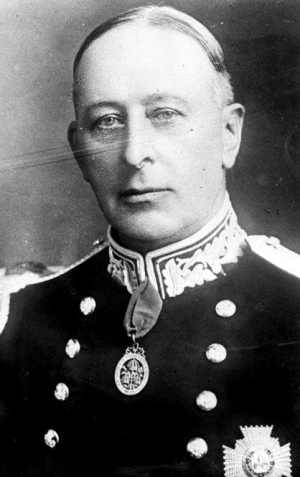Robert Chalmers
1. Robert Chalmers
Robert Chalmers, 1st Baron Chalmers (18 August 1858 – 17 November 1938) was a British civil servant, and a Pāḷi and Buddhist scholar.
In later life, he served as the Master of Peterhouse, the oldest constituent college of the University of Cambridge in England.
2. Background and education
Robert Chalmers was born in Stoke Newington, Middlesex, the son of John Chalmers and his wife Julia.
He was educated at the City of London School and Oriel College in Oxford with a BA in 1881.
He eventually went on to become the Master of Peterhouse, Cambridge, one of the most traditional and conservative Cambridge colleges.
3. Career
Civil Servant and Governor of Ceylon
He joined the Treasury in 1882 and served as Assistant Secretary to the Treasury from 1903 to 1907.
He was then Chairman of the Board of Inland Revenue between 1907 and 1911, and Permanent Secretary to the Treasury from to 1911 to 1913.
In June 1913 Robert Chalmers was appointed Governor of Ceylon, a post he held from 18 October 1913 to 4 December 1915.
He was responsible for the Martial Law imposed on Sinhalese Civilians infamous as 100 days of Terror under the British
in Ceylon in 1915.
Ceylonese Barrister E.W. Perera braved submarine-infested seas to travel by ship with a petition concealed in his shoe to London where he succeeded in convincing the British Government the atrocities perpetrated under martial law in Śrī Lanka.
As a result, Governor Chalmers was recalled to England and a Royal Commission of Inquiry was appointed to probe the atrocities.
Robert Chalmers is sometimes accused of having been anti-Buddhist:
These accusations are unfounded, for before being appointed Governor of Ceylon in 1913, he was a prominent member of the Pāḷi Text Society.
As such, he had already translated many Buddhist texts into English, from Pāḷi, a language he masters perfectly.
Also, when he arrived in Ceylon, his fame as a scholar was greatly appreciated by dignitaries of Buddhism:
One of the first official ceremonies he presided over was the presentation of the Vidyodaya Pirivena Awards, named after a famous Buddhist University in Colombo:
He delivered his speech not in English, but in Pāḷi, thus arousing the admiration of the scholars present.
After the dramatic episode of Martial Law, he was then briefly Under-Secretary to the Lord Lieutenant of Ireland Lord Wimborne in 1916.
He was admitted to the Irish Privy Council the same year.
He then returned to the Treasury and served as Joint Permanent Secretary to the Treasury from 1916 to 1919.
In 1919 he was raised to the peerage as Baron Chalmers, of Northiam in the County of Sussex.
Pāḷi and Buddhist scholar
From the beginning of his schooling at the City of London School from 1870 to 1877, he was very interested in Ancient Languages, especially Greek, Latin.
He was also interested in Sanskrit and philology. He completed his studies at Oriel College, Oxford, where he obtained the Bachelor of Arts (BA) in 1881.
In 1882, when he began his career as a civil servant in Her Majesty's Treasury, he did not abandon his classical studies, as he wanted to perfect his knowledge of Ancient Languages.
Thus he attended the Pāḷi classes of Thomas William Rhys Davids, whose enthusiasm won him over, and became a member of the Pāḷi Text Society.
From 1891 he published numerous articles in the Journal of the Royal Asiatic Society (JRAS), translations into English from the Pāḷi of texts mainly from the Majjhima Nikāya.
In 1897, he made a presentation dealing with the Pāḷi term Tathāgata, at the 11th International Congress of Orientalists held in Paris.
Under the direction of T.W Rhys Davids, he published between 1895 and 1902, the first English translation of the Sutta Piṭaka, from the original texts written in Sinhala, Siamese and Burmese.
This first version would be revised and expanded and published by the Pāḷi Text Society in 1926-1927 under the title Further Discourses of the Buddha.
From 1922 to 1925 he was president of the Royal Asiatic Society.
In 1924, he was appointed professor at Peterhouse College of the University of Cambridge and taught there until 1931.
At the same time he produced his ultimate work of scholarship: a translation of the Sutta Nipāta, published in 1932, then considered remarkable for its style and literary accuracy.
Assessment of his dual career
In almost 40 years, he translated more than 2000 Buddhist texts. His erudition has made him a well-known and respected scholar.
Unfortunately, his competence in this field was of no use to him in his other career, particularly in managing the Riots of 1915, which ironically took place in one of the countries where the ancient texts he studied tirelessly for most of his life were written.
4. Family
Lord Chalmers married, firstly, Maud Mary Piggott, in 1888.
After her death in 1923 he married, secondly, Iris Florence, in 1935.
His 2 sons from his 1st marriage, Captain Ralph Chalmers and Lieutenant Robert Chalmers, were both killed in the First World War (within the same month).
His daughter Mabel lived until the 1960s.
Lord Robert Chalmers died in November 1938, aged 80.
As he had no surviving male issue the barony died with him.
Lady Chalmers died in 1966.
Death
His health began to deteriorate in the summer of 1938.
He died on 18 November of the same year, leaving no male heirs. As a result, he is both the 1st and the last Baron Chalmers.
